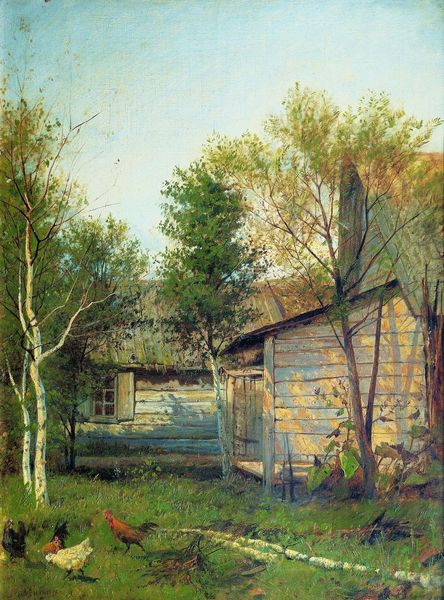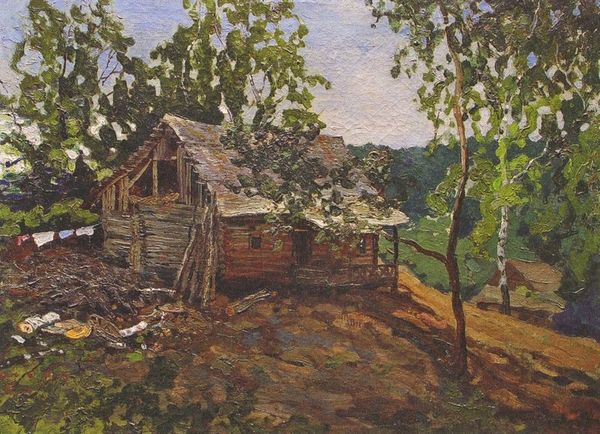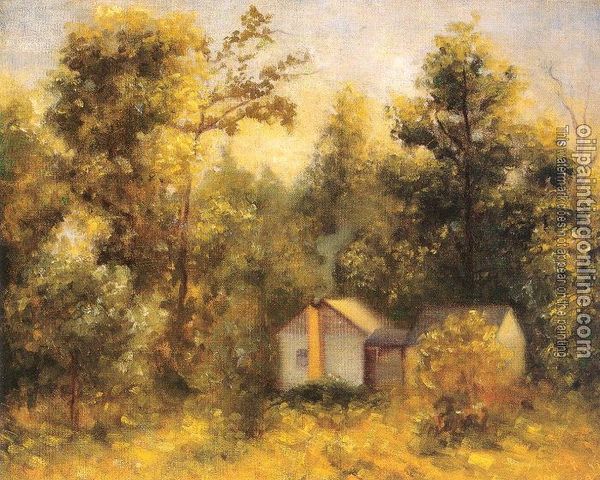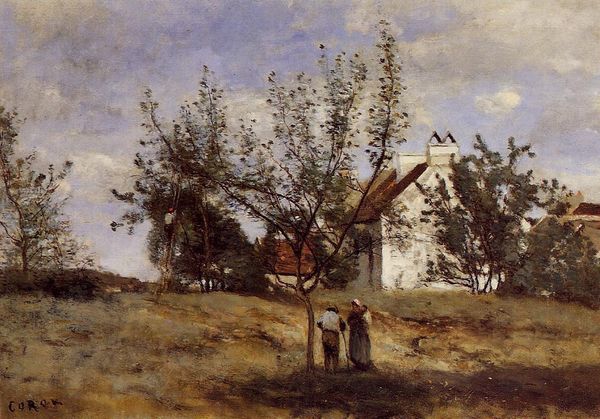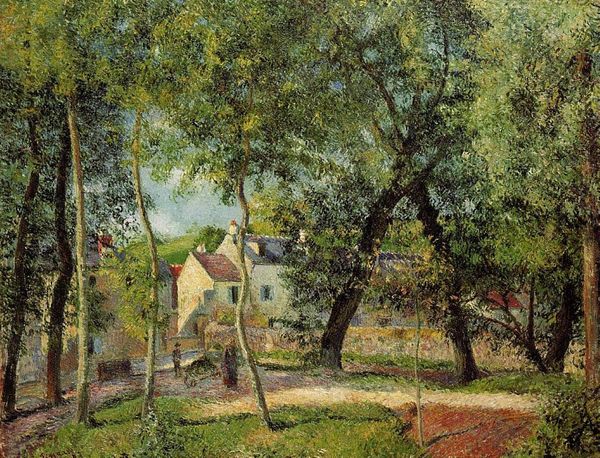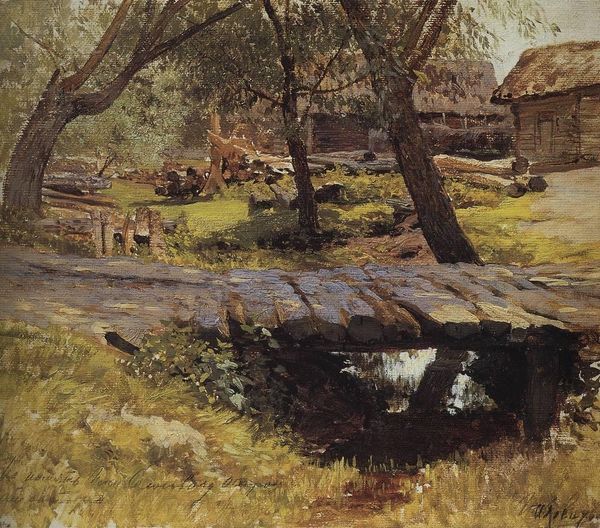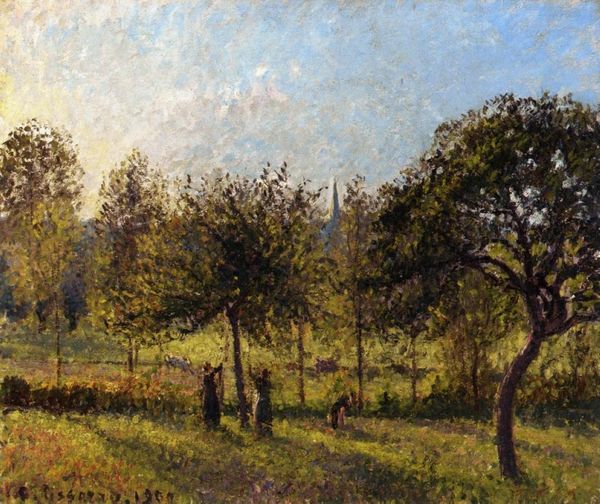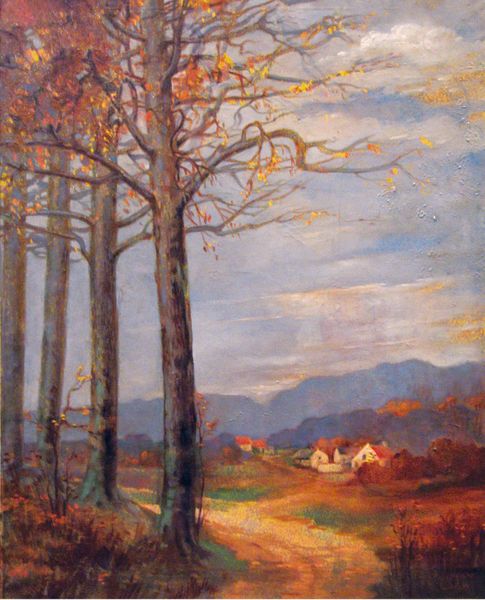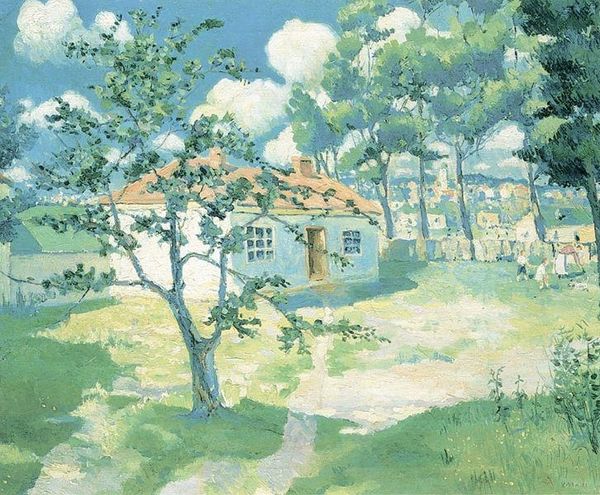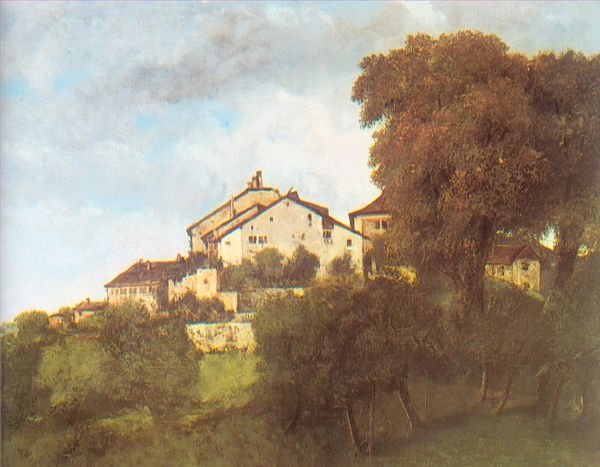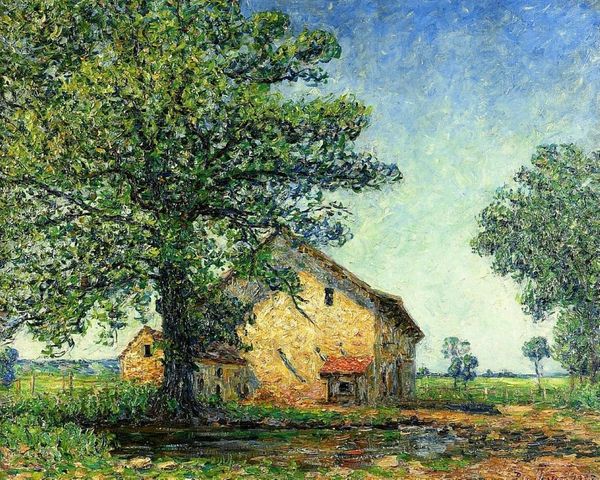
Dimensions: 46.4 x 55.3 cm
Copyright: Public domain
Curator: Today, we're looking at Gustave Courbet's "Swiss Landscape with Flowering Apple Tree," painted in 1876. What strikes you initially about this work? Editor: A sense of serenity, immediately. The flowering tree dominates, yet it frames these almost toylike buildings nestled in the landscape. It's peaceful but possesses a quiet, watchful energy. Curator: It's fascinating how Courbet orchestrates this dynamic. The composition is decidedly split, you've got the foreground structures, rendered in rather geometric terms, which transition to the more fluid application of paint, as evinced in the foliage and beyond, into that hazy, indeterminate distance. Editor: I see that interplay – the stark, man-made structures versus the blooming chaos of nature. That flowering apple tree...it’s an incredibly potent symbol, loaded with connotations of renewal, spring, even temptation and knowledge, dating back to antiquity. Its placement overshadowing the buildings infuses the scene with deeper resonance. Curator: Interesting to consider this tree, then, as a kind of formal rupture within the composition. Given that he rendered the piece *en plein air,* do you read that dominating floral form as strictly representational, or could it imply something more about his handling of material? Editor: I think its size and position point to something more deliberate than mere transcription. In folk traditions, apple trees are guardians, tied to home and prosperity, especially in that part of the world. Courbet uses that archetype to layer meanings into his landscape. He seems very focused on an immediate sense of location and memory here. Curator: Perhaps, though it strikes me that the immediacy of this Swiss scene is complicated by the objective forms he's chosen. Rather than detail, Courbet opts to pursue broader contrasts, pushing our perception toward an optical encounter that almost feels impressionistic in its handling. Editor: It's certainly more than just meets the eye, no pun intended. The interplay between representation and deeper meaning invites speculation. Curator: A tension inherent to landscape art in general, wouldn't you say? Well, whether you interpret it as symbolism or simply a study in contrasting forms, Courbet's "Swiss Landscape" certainly offers much to contemplate. Editor: Yes, definitely a work that encourages the viewer to pause and let its layers slowly reveal themselves.
Comments
No comments
Be the first to comment and join the conversation on the ultimate creative platform.
